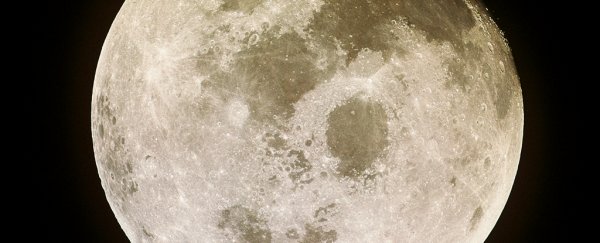A supermoon describes the Moon's closest approach to Earth whenever it coincides with a new or full phase.
The term itself was coined in the late 1970s by an astrologer named Richard Nolle. While the word holds no significant meaning in science, it is of general interest to stargazers thanks to the Moon's slightly larger appearance and, as a full moon, increased luminosity.
To put it into astronomical terms, a supermoon is a syzygy; a straight line configuration between the Moon, Earth, and the Sun. When a full moon or a new moon draws nearest to Earth in its orbit, it looks much larger from where we're standing.
When the syzygy is lined up so that the Moon is furthest away from Earth, that is called a micromoon. This is the opposite of a supermoon (but nobody cares as much about a tiny looking Moon).
How often do supermoons occur?
Given there is no universally accepted definition of how close the Moon must be to be regarded as a supermoon, their frequency could be considered a matter of personal opinion. A supermoon is in the eye of the beholder.
Nolle's original qualification in 1979 defined a supermoon as any period where the Moon was within 90 percent of its absolutely closest approach, while also at syzygy. Recent amendments qualify supermoons as 90 percent and above the average perigee distance.
It's not clear why 90 percent is significant. But based on this somewhat arbitrary cut-off, between a quarter and half of all full moons might be expected to appear 'super sized' in any given year.
Should you care about a supermoon?
If you're a big fan of our Moon in general, then yes. A super full moon is like a typical full moon, only it's a third brighter and up to 14 percent bigger. You get more Moon to gaze at, at no extra cost.
The increased proximity to our neighbour can make a significant difference as far as gravitational attraction, with pulling power varying by as much as 23 percent as the Moon's orbit brings it closer and further away to our own planet. Just don't expect this added attraction to mean a great deal down here.
This extra grunt has a small cumulative effect on vast fluids such as the oceans, and to a lesser extent the atmosphere, but there's no solid evidence that this produces significant changes in the weather or leads to significant increases in tectonic activity.
The slight increase in gravitational attraction also has a negligible effect on the mass of individual objects (like humans). You won't jump any higher during a supermoon, sorry.
All topic-based articles are determined by fact checkers to be correct and relevant at the time of publishing. Text and images may be altered, removed, or added to as an editorial decision to keep information current.
